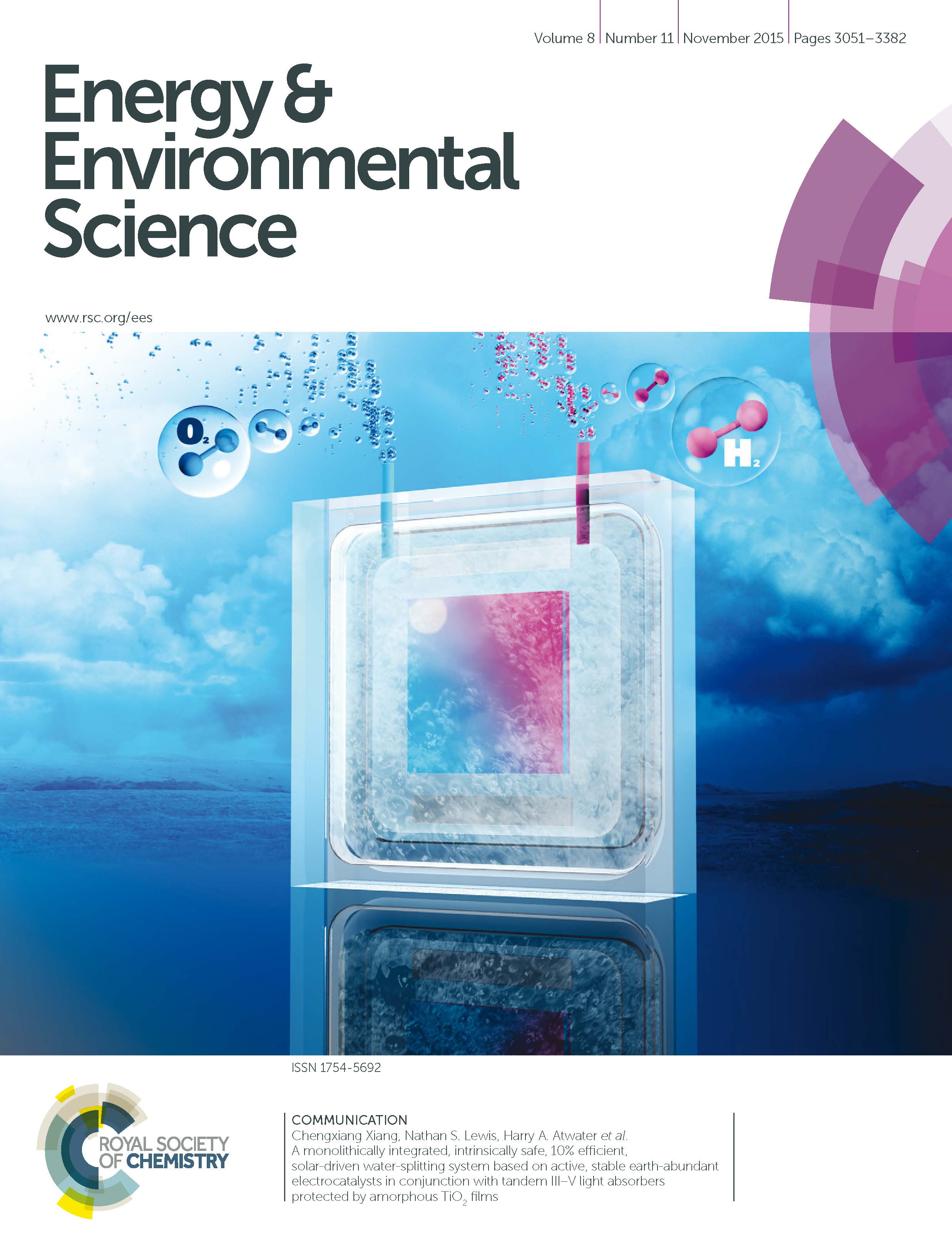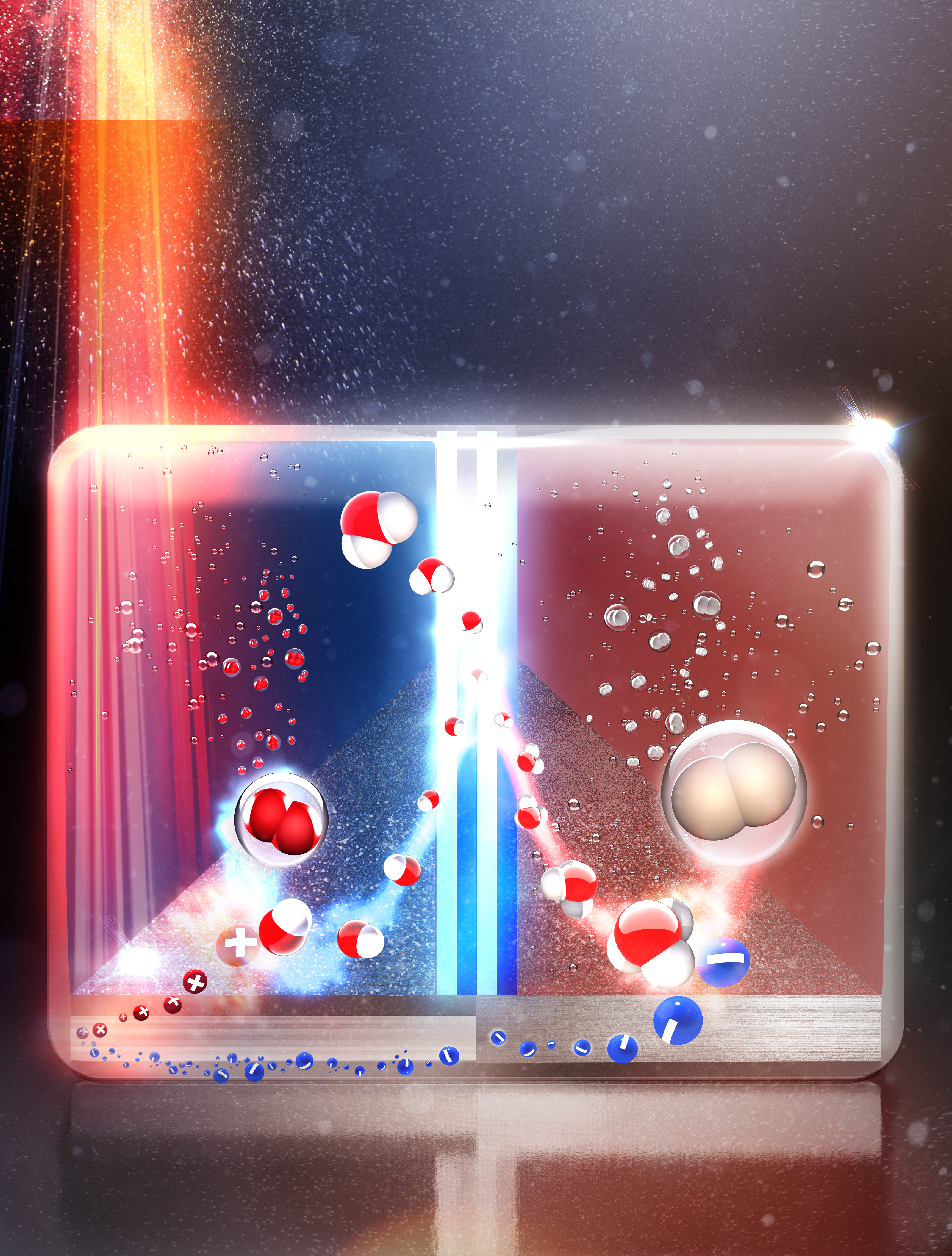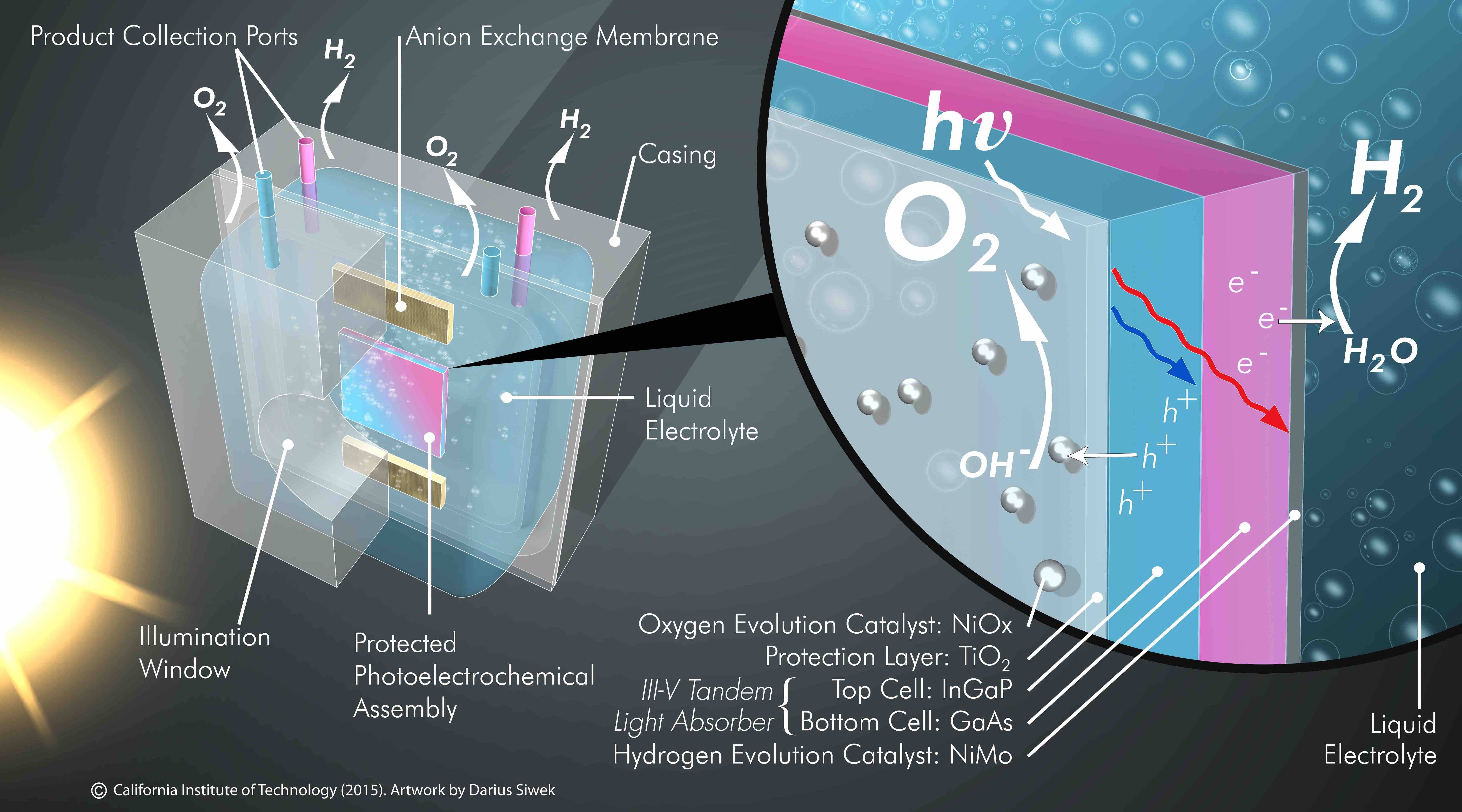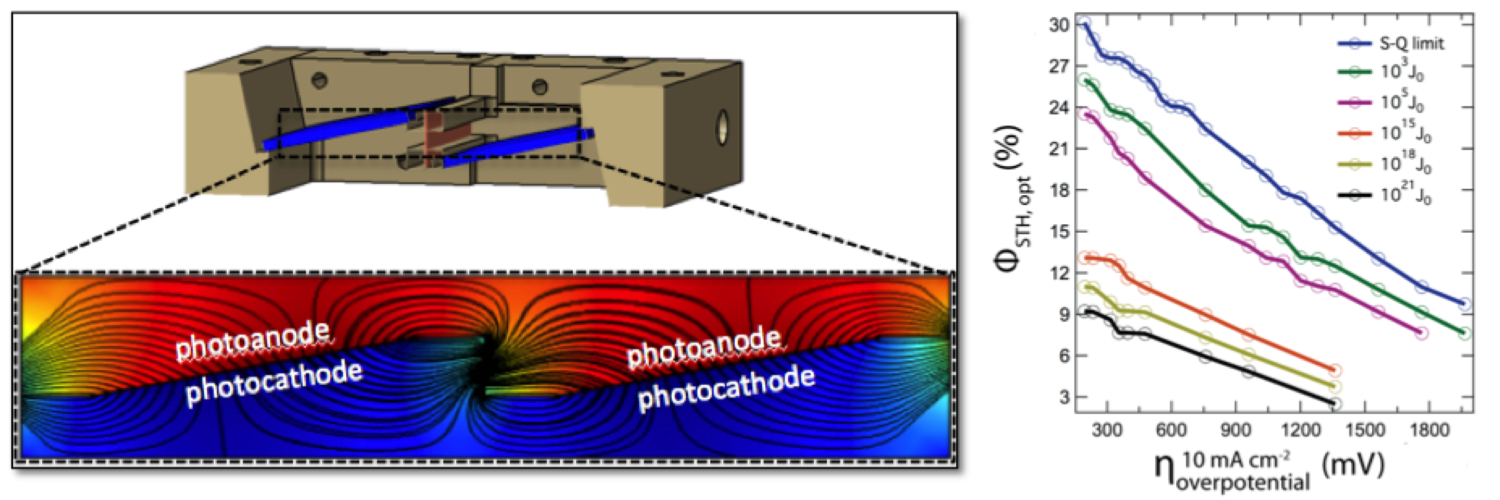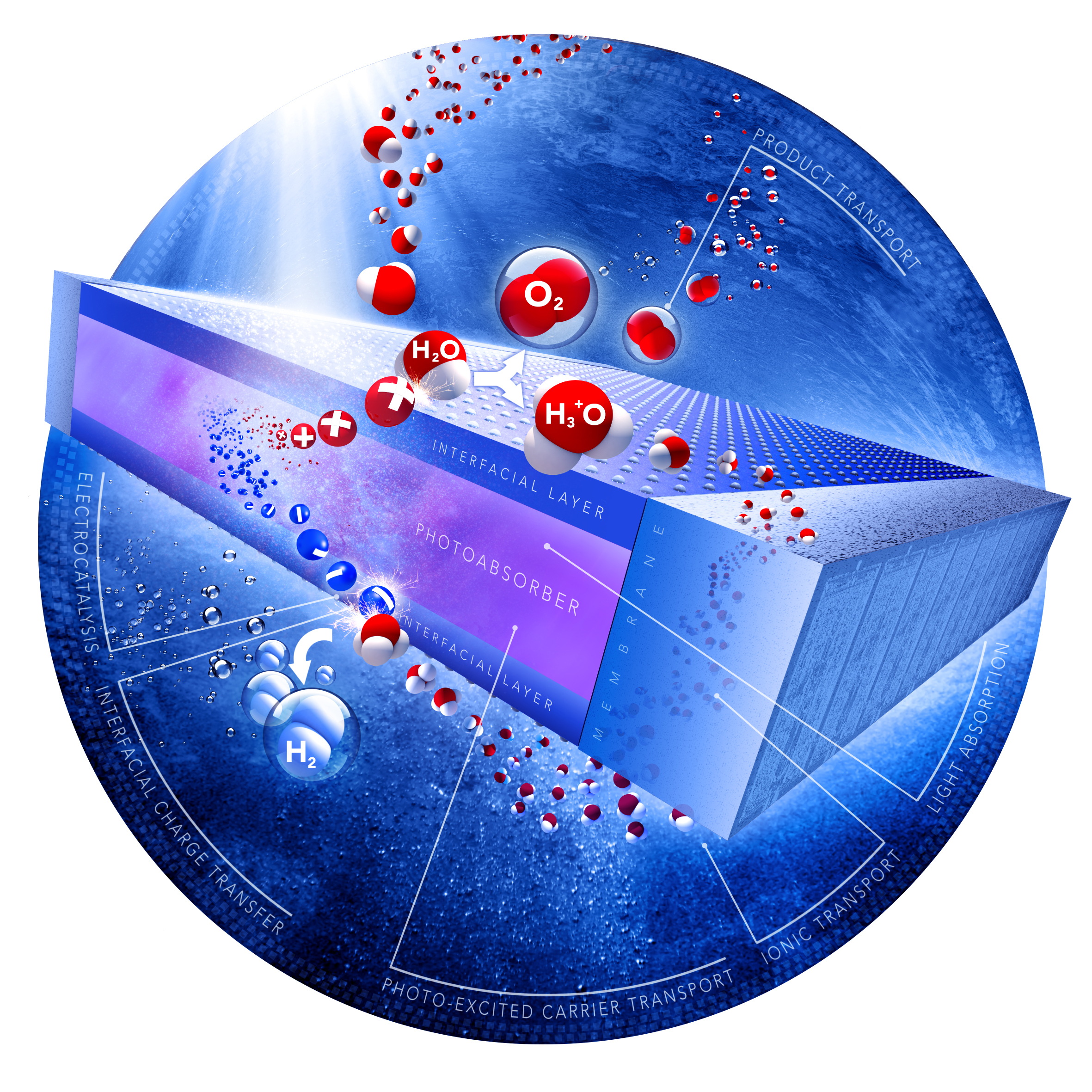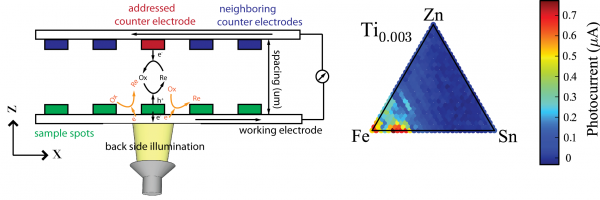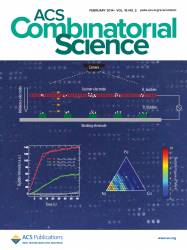This is an old revision of the document!
Experimental demonstration of high efficiency solar-hydrogen devices
Efficient, stable and scalable solar-driven water-splitting cells have the potential to store solar energy on the terawatt scale. Various photoelectrochemical (PEC) architectures have showed spontaneous water-splitting under illumination with solar-to-hydrogen (STH) conversion efficiency above 10%. Xiang's research group focus on design and fabrication of a variety of solar-fuel prototypes that are efficient, stable and scalably manufacturable. The group assemblies earth-abundant catalysts, protection layers, high performing photoabsorber materials and membrane separators into a fully integrated, wireless “artificial leaf” that is able to convert energy from the sunlight into chemical fuels.
Representative publications:
- A Stabilized, Intrinsically Safe, 10% Efficient, Solar-Driven Water-Splitting Cell Incorporating Earth-Abundant Electrocatalysts with Steady-State pH Gradients and Product Separation Enabled by a Bipolar Membrane, K. Sun, R. Liu, Y. Chen, E. Verlage, N. S. Lewis*, C. Xiang*, Advanced Energy Materials, 2016
Multi-physics, multi-dimensional modeling and simulation for solar-fuel device
A solar-driven water-splitting cell is generally comprised of light absorbers, electrocatalyts, membrane separators and an electrolyte solution in a specific system geometry. The overall solar-to-hydrogen conversion efficiency of such a system depends on the performance and materials properties of all the individual components as well as the design of the system. Xiang's research seeks to understand the performance limits and trade-offs of photoabsorbers, electrocatalysts and membrane separators for efficient solar-fuel product using multi-physics models. The whole cell model was developed to optimize geometries of prototype designs, to define operational conditions and constraints for various system designs, to provide target materials properties and to evaluate the viability of new design concepts.
Representative publications:
High Throughput Experimentation for solar-fuel material discoveries
High throughput synthesis and screening plays a critical role in solar-fuel material discovery. Xiang's research includes development of high throughput (>100,000 samples/day) screening instrumentations for photoabsorbers and electrocatalysts. For photoabsorbers, a fast quantum yield screening system using multiplexing counter electrodes with a thin layer assembly was developed and implemented. This novel screening system reveals the intrinsic charge collection properties of photoabsorbers without confounding effects from interfacial reactions at semiconductor/metal junctions or charge transfer kinetics in a fuel-forming reaction. For electrocatalyts, a simple approach to screen the electrocatalytic activities by imaging the bubble evolutions of hydrogen evolution reaction and oxygen evolution reaction from the material library was developed and implemented. This general approach is highly parallel and can be adapted to all pH ranges. For any “hit” material from the high throughput screening, a follow up screening with detailed electrochemical characterization is performed.
Representative publications:
- A High Throughput Bubble Screening Method for Combinatorial Discovery of Electrocatalysts for Water Splitting, ACS Combinatorial Science, 2014
- Mapping Quantum Yield for (Fe-Zn-Sn-Ti)Ox Photoabsorbers Using a High Throughput Photoelectrochemical Screening System ,ACS Combinatorial Science, 2013

